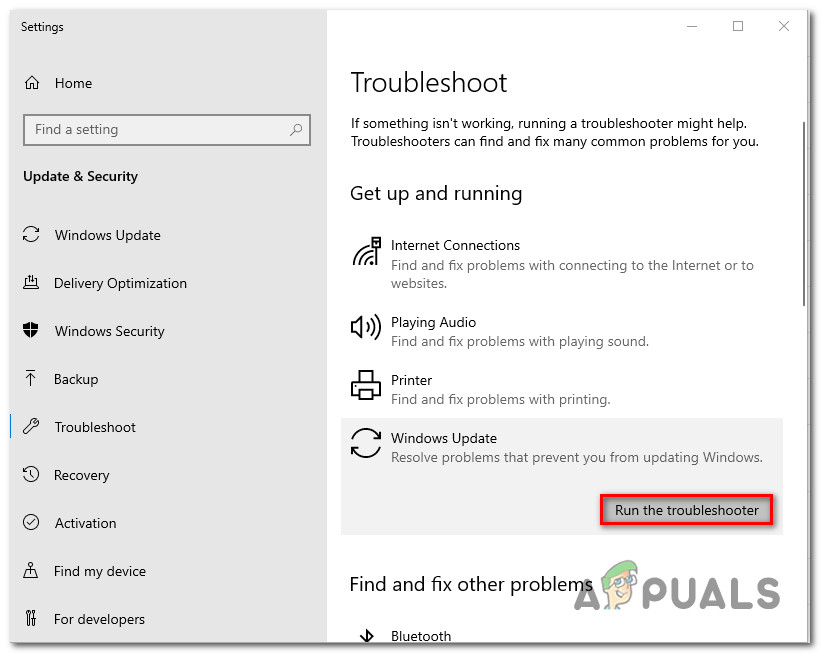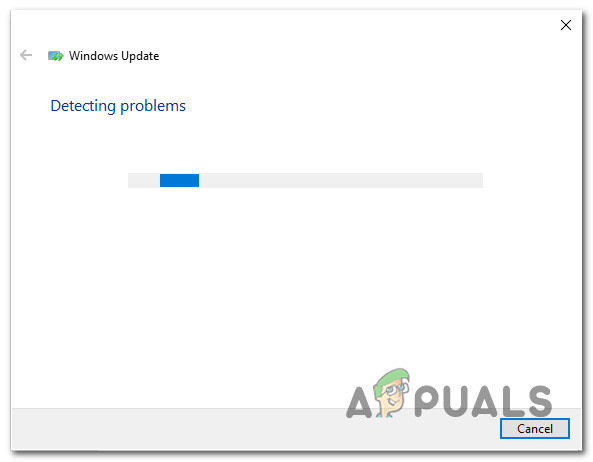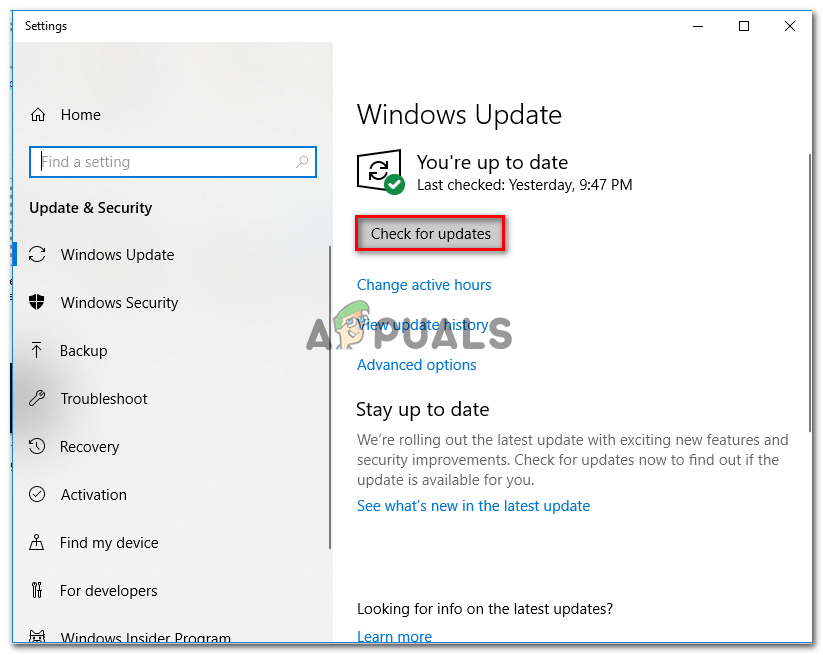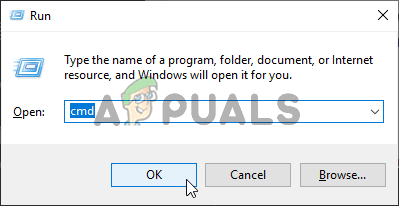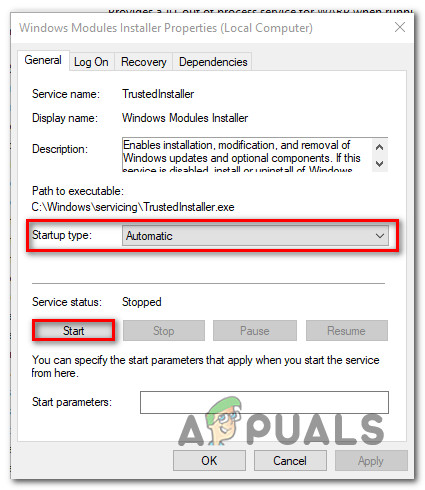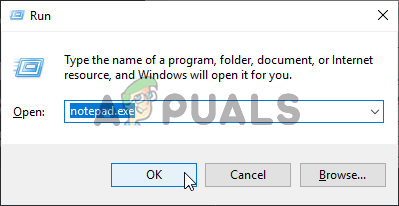Windows Update Error C80003F3In more severe cases, this issue effectively breaks the auto-update ability, so users need to resort to manual updating to get their Windows version up to date. Based on our investigations, the issue is reported to occur on Windows 7, Windows 8.1 and Windows 10.
What’s causing the Windows Update Error C80003F3?
We investigated this particular issue by looking into various user reports and by testing out various repair strategies that are recommended by users that were previously affected by the same problem. As it turns out, several different scenarios might spawn this error code. Here’s a shortlist with culprits that might trigger this error message: If you’re currently struggling with the same error message, this article will provide you with several different troubleshooting steps. Down below, you’ll a collection of potential fixes that other users in a similar situation have successfully used to resolve the “Windows Update Error C80003F3″. For the best results, we advise you to follow the methods below in the same order that we arranged them in as they are ordered by efficiency and severity. Eventually, you should encounter a fix that will fix the problem and allow your Windows to self-update regardless of the culprit that’s currently causing the issue. Let’s begin!
Method 1: Running the Windows Update troubleshooter
Before we explore other repair strategies, you should start by ensuring that Windows is not capable of dealing with the issue on itself. Several users that have been encountering the Windows Update Error C80003F3 have reported that the problem was resolved after they ran the Windows Update troubleshooter. This built-in utility will analyze the whole WU component for inconsistencies and will recommend a repair strategy if it manages to find a strategy that is suitable for this scenario. Here’s a quick guide on running the Windows Update Troubleshooter: If you’re still encountering the Windows Update Error C80003F3, move down to the next method below.
Method 2: Installing Important Updates first
Some Windows updates have prerequisites, meaning that to be installed properly, they need a certain update to be installed first. As some users have reported, this could be the reason why you’re seeing the Error C80003F3 when you try to install a certain Windows update. You may be trying to install an update that is conditioned by an Important Update. In this case, you should be able to resolve the issue by installing every other pending update first and leave the failing update to install last. Here’s a quick guide on how to do this: If you’re still encountering the Error C80003F3 or your computer was already up to date, move down to the next potential fix below.
Method 3: Enabling all essential WU services
Another possible scenario in which you’ll see the Windows Update Error C80003F3 are situations where one or multiple services essential to the process of installing pending updates are disabled. If any of these key services, the process of installing the update will eventually fail (often with this error code). Several affected users that found themselves in a similar situation have reported that they managed to fix the issue by checking the and enabling every essential WU service that wasn’t running. After doing this, the installation of the problematic update completed without issues. Depending on your technical abilities, two different methods will allow you to ensure that every critical WU service needed for the updating operation is enabled. Both method will allow you to do the same thing, so be sure to choose whatever guide you’re most comfortable with.
Enabling services via Command Prompt
This is the quickest way and most effective method of ensuring that all essential services are running as intended. Here’s a quick guide on enabling all essential WU services via an elevated Command Prompt:
Enabling all WU services via GUI
If you’re not that fond of using the CMD terminal, there’s also a workaround that will enable you to modify the status of the same WU services by using the Windows GUI – using the Services screen. But be warned, the steps are a little more tedious, but the results are exactly the same. Here’s what you need to do: If none of the two operations presented above have allowed you to resolve the issue, move down to the next method below.
Method 4: Reset all WU Components
If none of the methods above have allowed you to resolve the Windows Update Error C80003F3, there’s a high chance that you’re dealing with a persisting WU (Windows Update) bug that will not go away conventionally. Under certain circumstances, certain WU services might become stuck in a limbo state, which has the potential of triggering this kind of behavior. If this scenario is applicable, you can resolve the issue by resetting all WU components involved in this operation. You can achieve this by using two different methods – you either go the manual route or you use the automated WU agent.
Resetting all WU components using the automated agent
Resetting all WU components via an elevated CMD prompt
If the same issue is still occurring, move down to the next method below.
Method 5: Re-registering DDLs connected to WSUS
Several Windows users that have tried resetting all WU components without success have finally been able to resolve the issue by re-registering all the DDLs that are involved with WSUS. The steps of creating this script are not hard to replicate, and it will save you from a lot of manual labor. Here’s a quick guide on using Notepad to create a script that will reset all Windows components and re-register all involved DLLs components: If the same problem is still occurring, move down to the next method below.
Method 6: Uninstalling Commodo firewall (if applicable)
As it turns out if you’re using Commodo antivirus on an older Windows version like Windows 7 or Windows Vista. There are a couple of Commodo firewall versions (particularly versions older than v3.0.15.277) that will cause this error with new Windows Updates. Several users that found themselves in a similar situation have managed to resolve it and install the failing update by getting rid of the 3rd party firewall solution first. As it turns out, switching to the native firewall will no longer trigger this particular behavior. This suggests the possibility that Commodo firewall tends to be overprotective in certain situations. Here’s a quick guide on uninstalling Commodo firewall and removing any remnant files:
Fix: Windows Update Error “We Couldn’t Connect to the Update Service”[SOLVED] One of the Update Services is not Running Properly in Windows UpdateLast Free Update For Windows 7 Released, KB4534310 And KB45343140 Are The Final…How to Update the Windows Update Agent to the Latest Version


